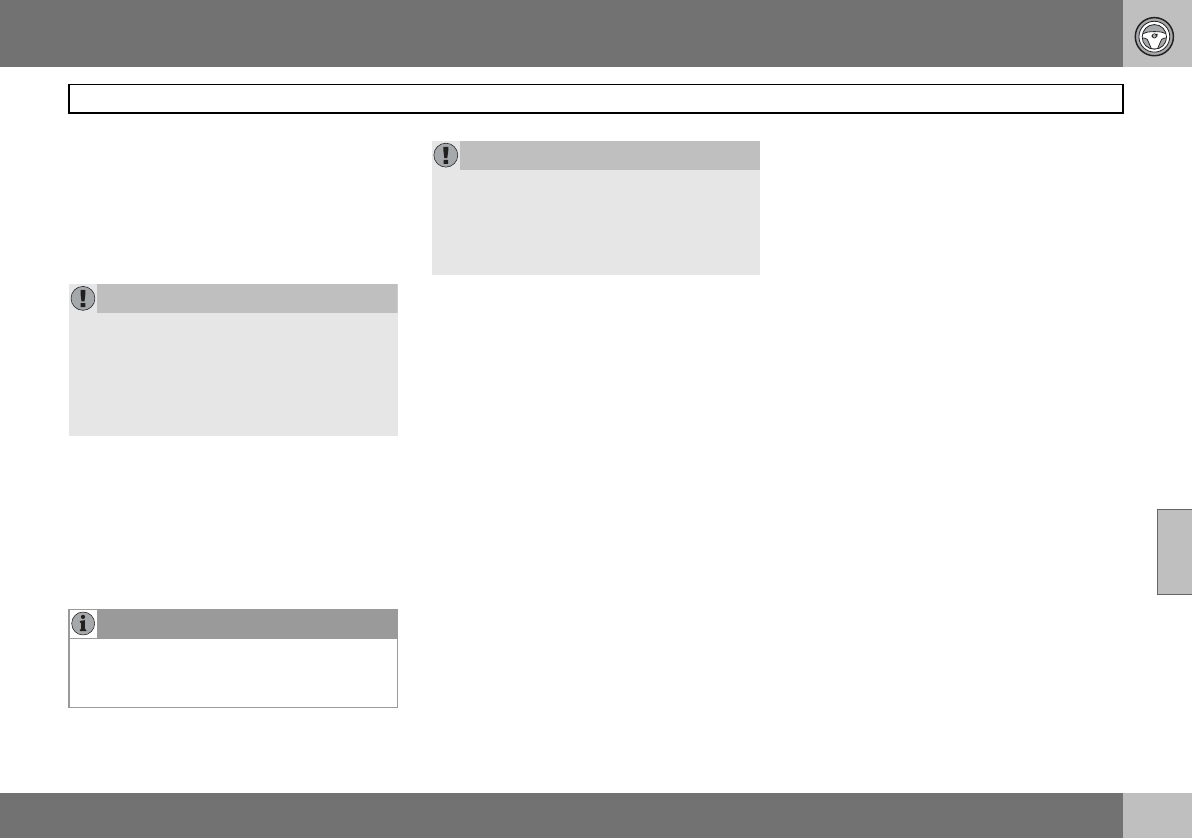
06 Starting and driving
111
General
06
Driving in water
The car can be driven through water at a
maximum depth of 25 cm at a maximum
speed of 10 km/h. Extra caution should be
exercised when passing through flowing
water.
When driving in water, maintain a low speed
and do not stop the car. When the water has
been passed, depress the brake pedal lightly
and check that full brake function is
achieved. Water and mud for example can
make the brake linings wet resulting in de-
layed brake function.
Do not overload the battery
The electrical functions in the car load the
battery to varying degrees. Avoid having the
ignition key in position II when the engine is
turned off. Use position I instead, as less
power is used. The 12 volt outlet in the cargo
area supplies power even when the ignition
key is removed.
Examples of functions that use a lot of
power:
• ventilation fan
• windscreen wipers
• audio system
•parking lights.
Also, be aware of different accessories that
load the electrical system. Do not use func-
tions which use a lot of power when the en-
gine is switched off.
A text is shown in the display in the com-
bined instrument panel if battery voltage is
low and remains until the engine has started.
The energy-saving function shuts down cer-
tain functions or reduces the load on the bat-
tery by, for example, slowing the ventilation
fan and switching off the audio system.
Charge the battery by starting the engine.
IMPORTANT
Engine damage can occur if water enters
the air filter.
In greater depths, water can enter the trans-
mission. This reduces the lubricating ability
of the oils and shortens the service life of
these systems.
NOTE
Clean the electric contacts of the electric
engine block heater and trailer coupling af-
ter driving in water and mud.
IMPORTANT
Do not let the car stand with water over the
sills for any long period of time. This could
cause electrical malfunctions.
In the event of stalling in water, do not try to
restart. Tow the car out of the water.


















